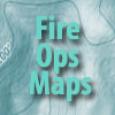Definition: The product resulting from the collection, processing, integration, analysis, evaluation, and interpretation of available information.
(Department of Defense/Fire Research And Management Exchange System)
The intelligence topic page contains resources and activities related to the detection, information correlation, and statistical observations of data associated with wildland fire.
Upcoming Events
Announcements and Jobs
Recent Catalog Records
Document
2024